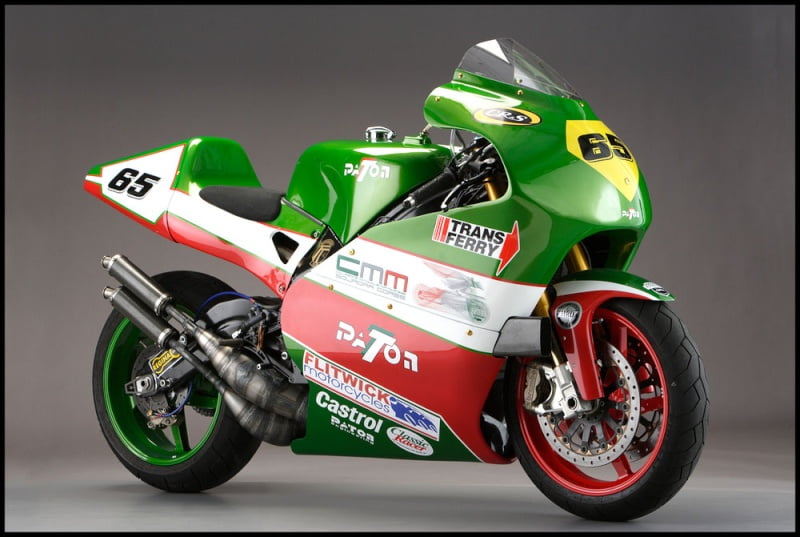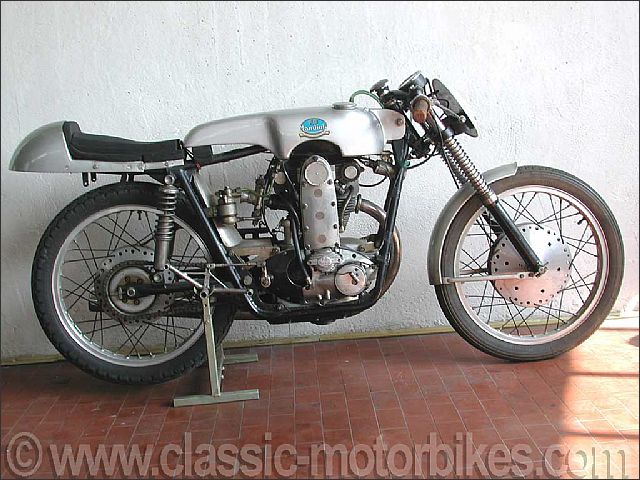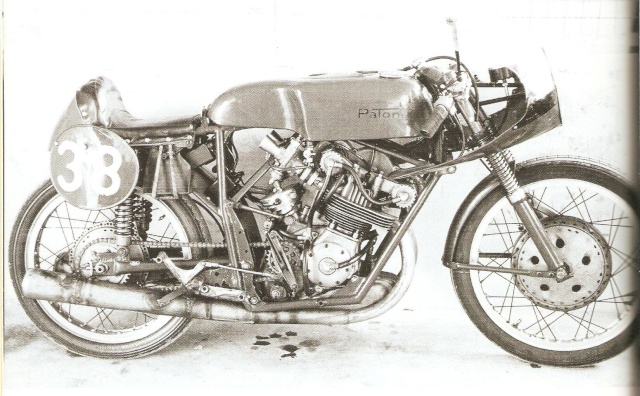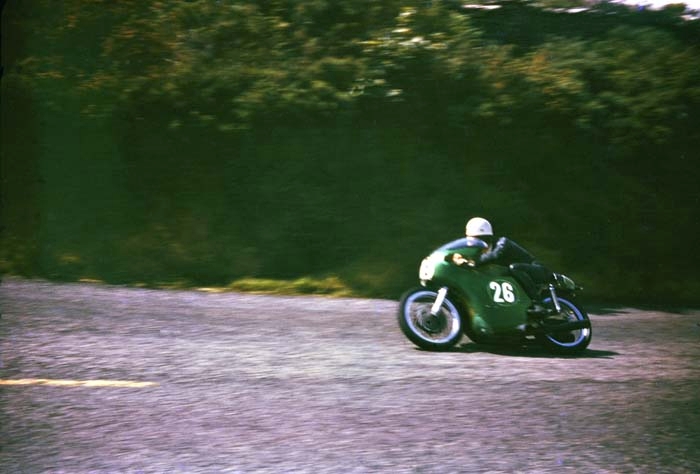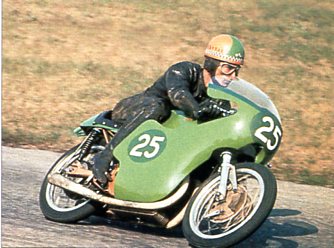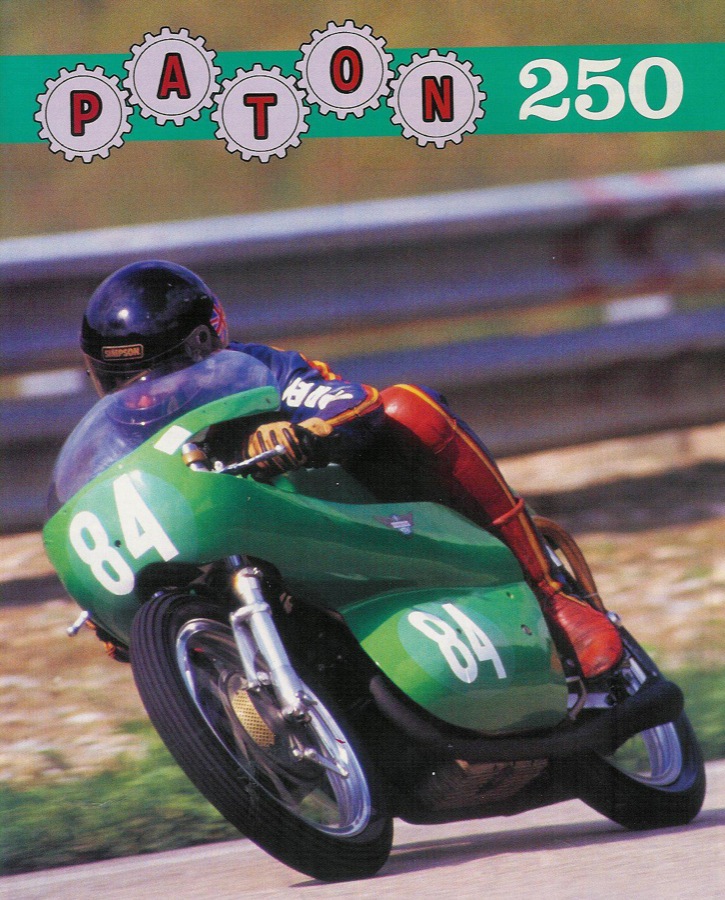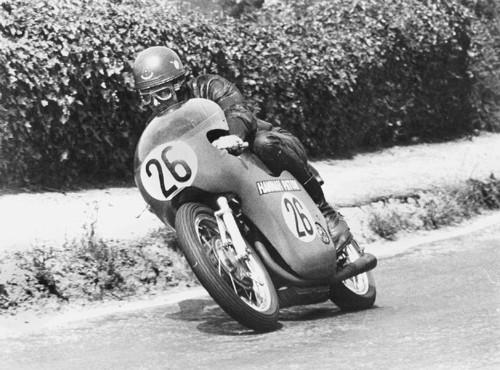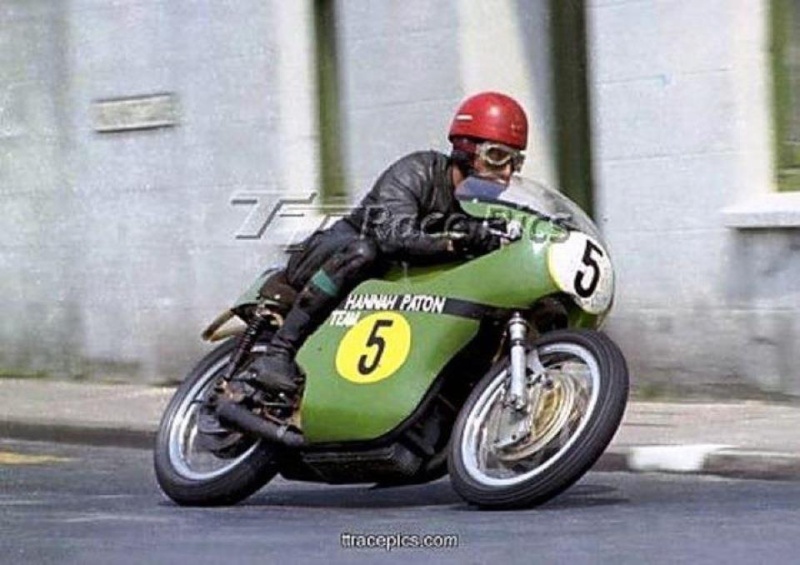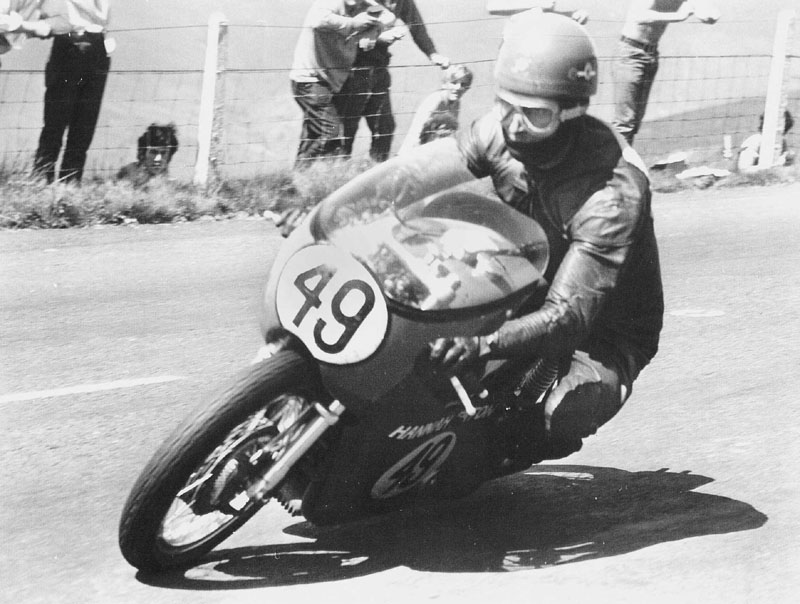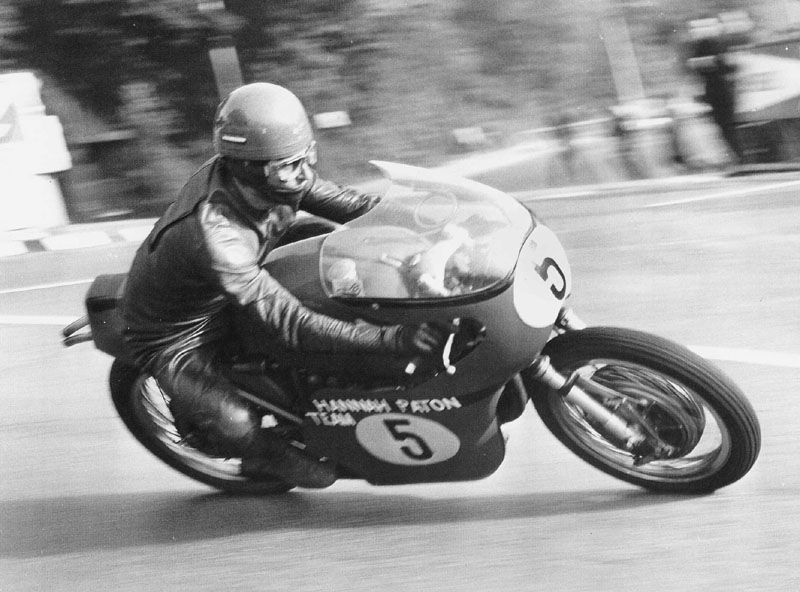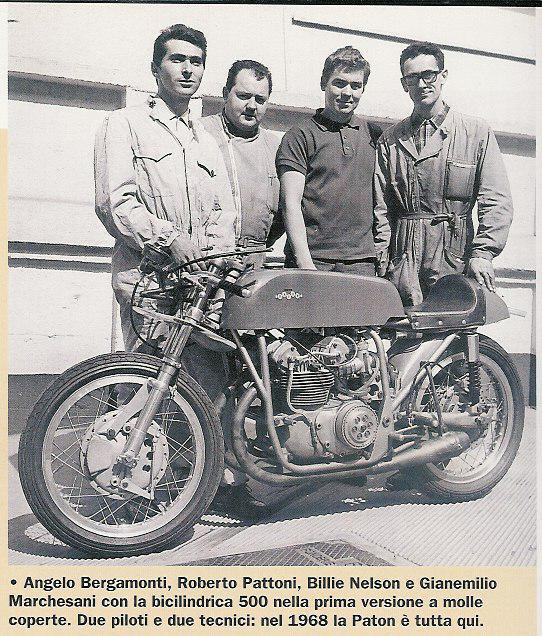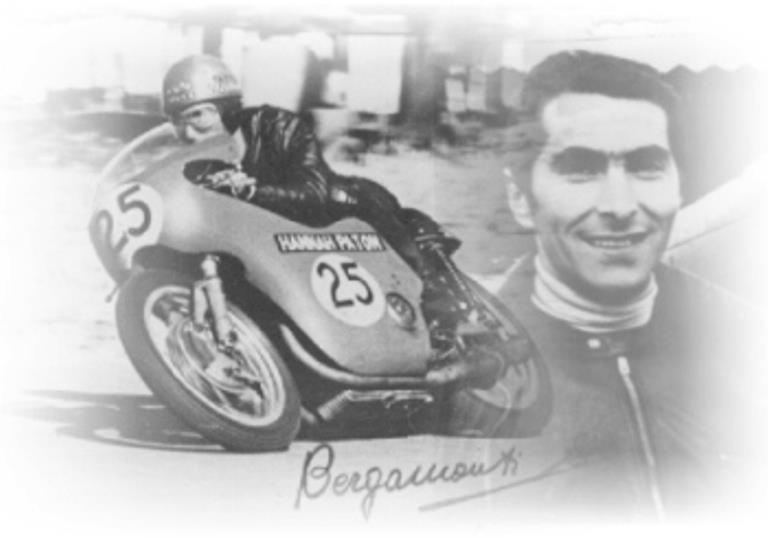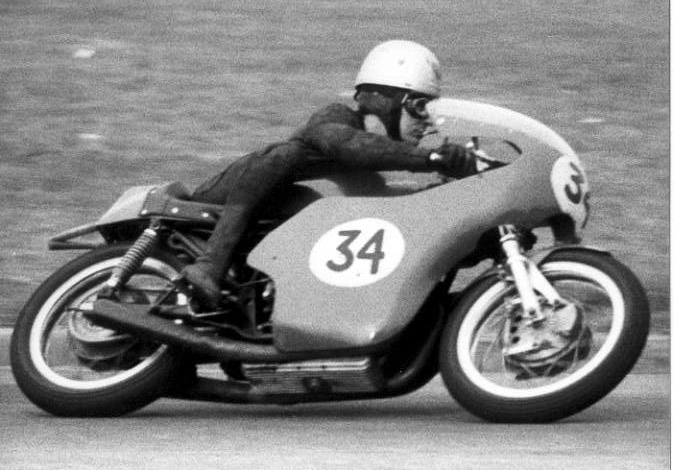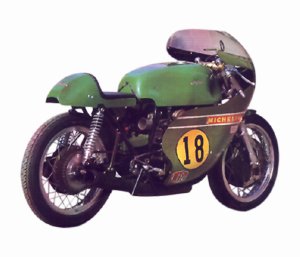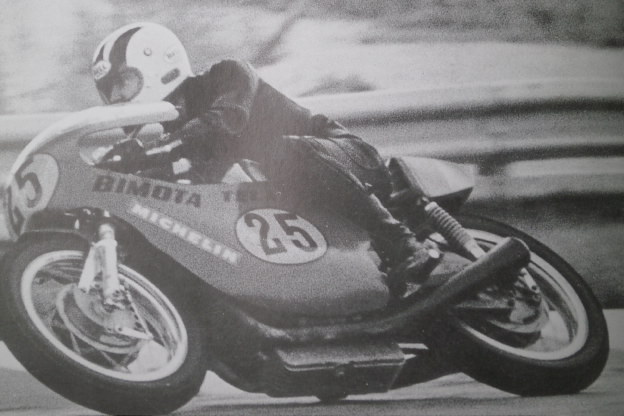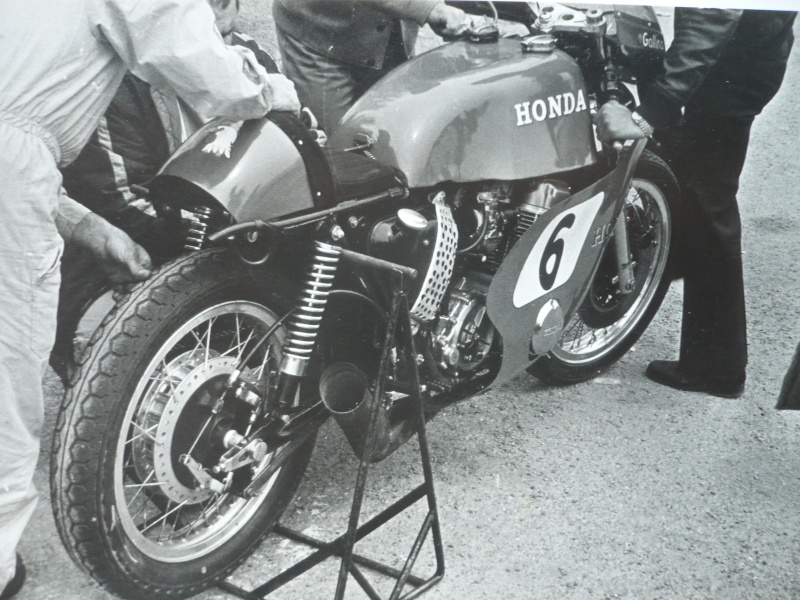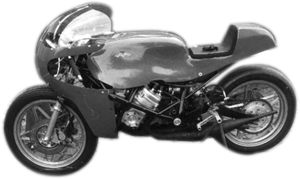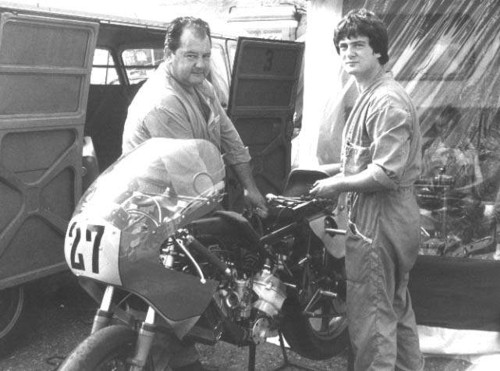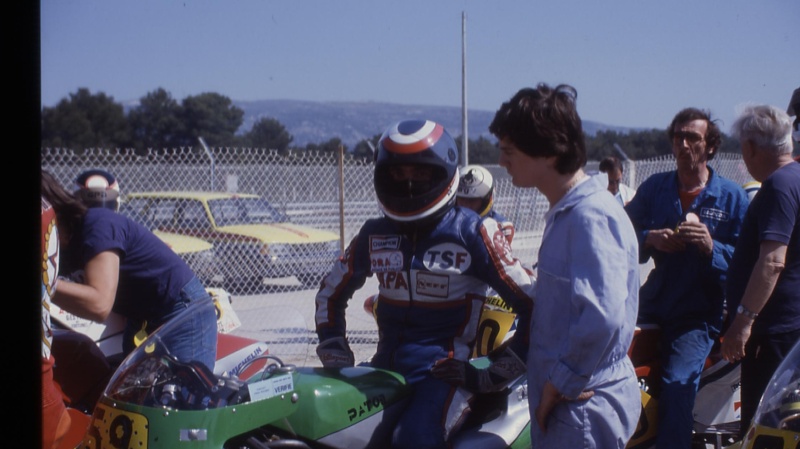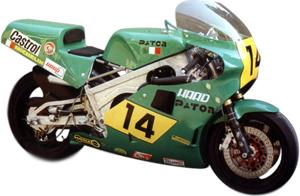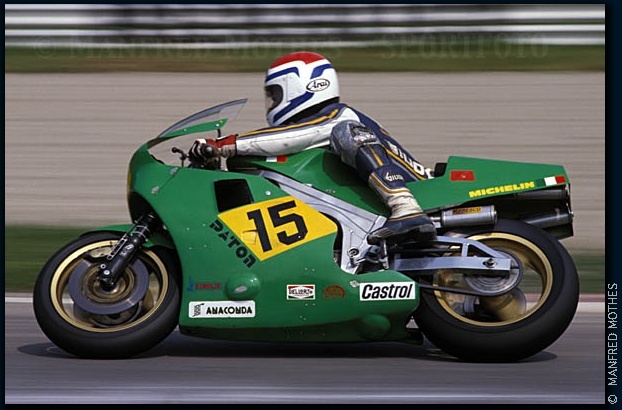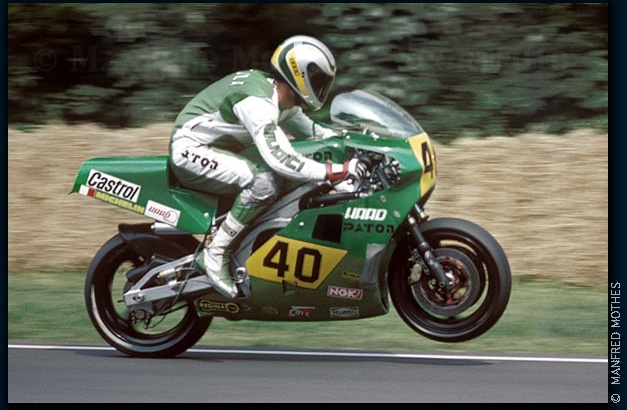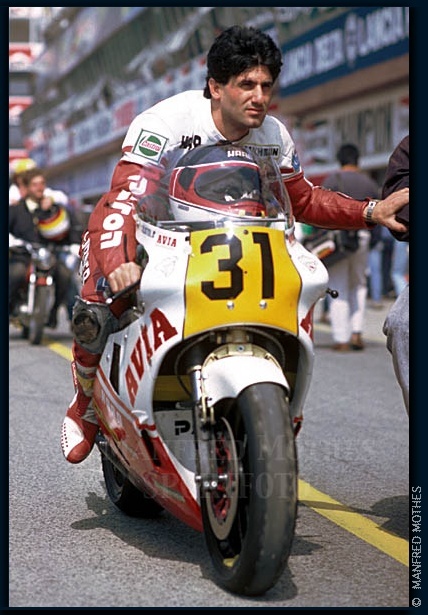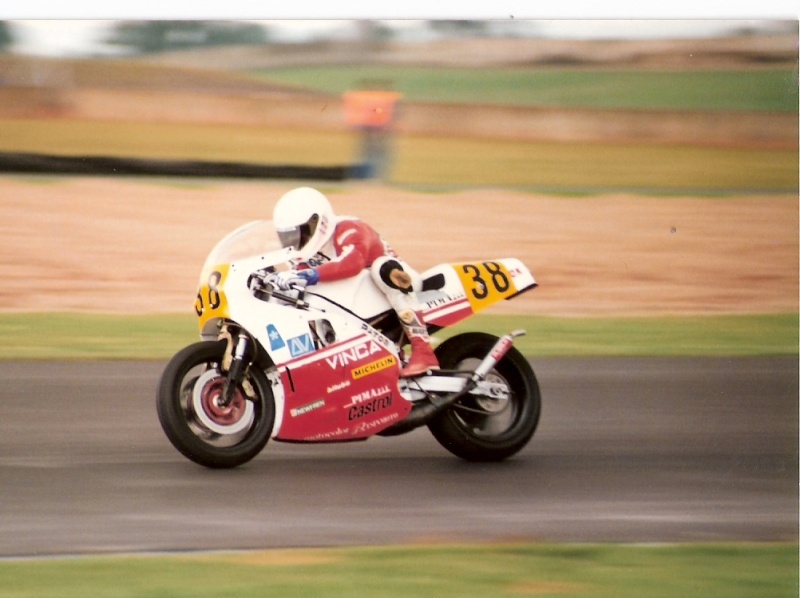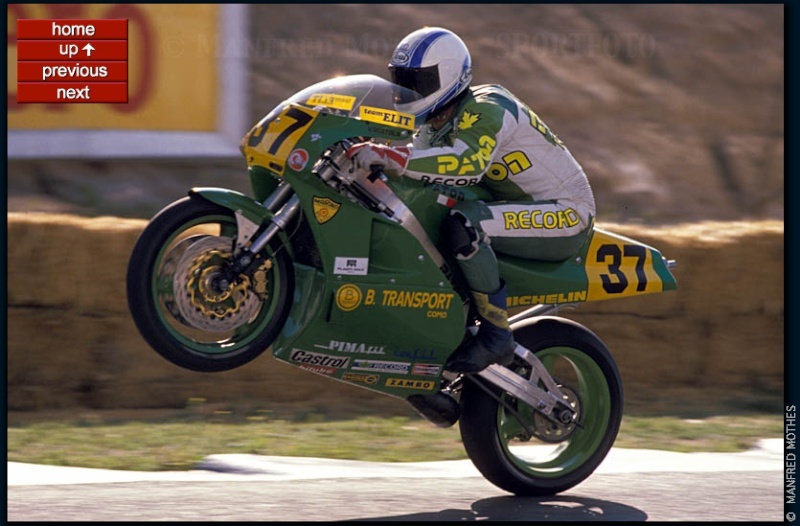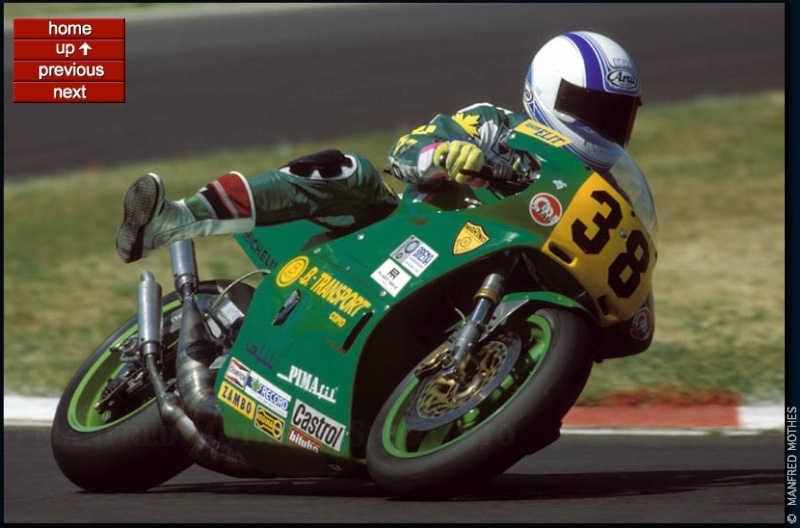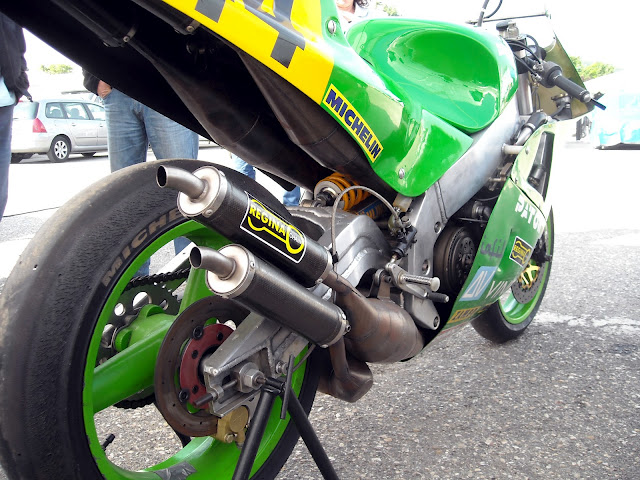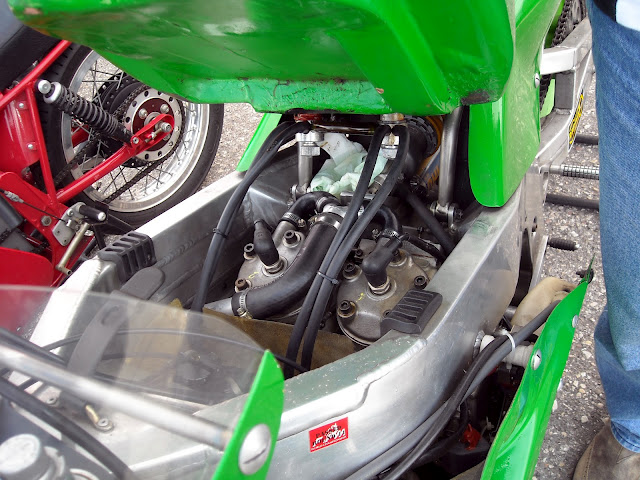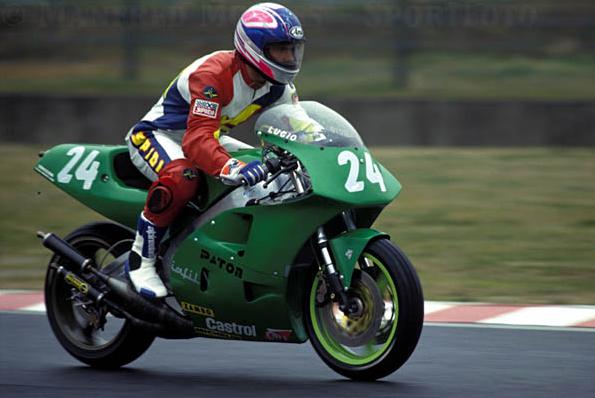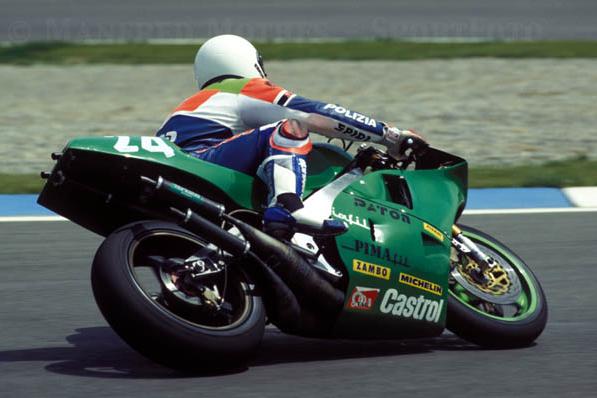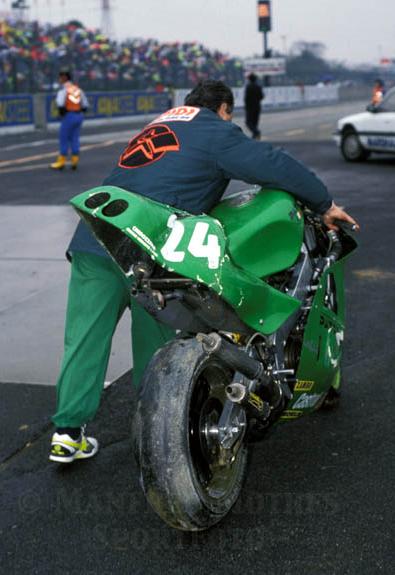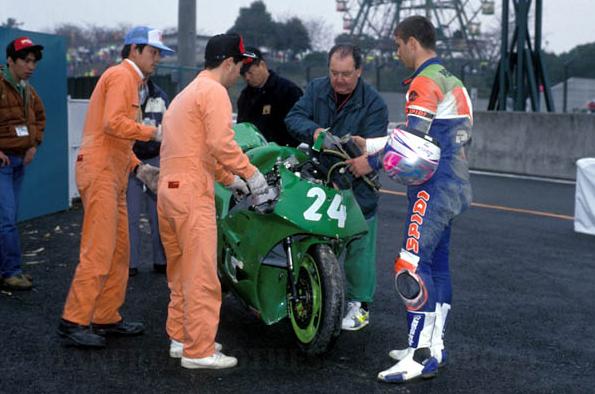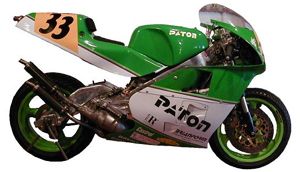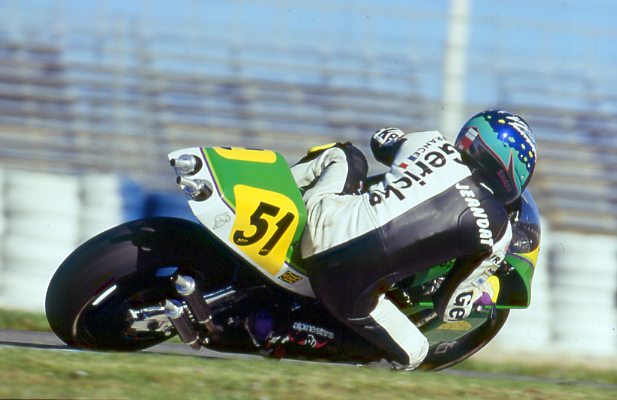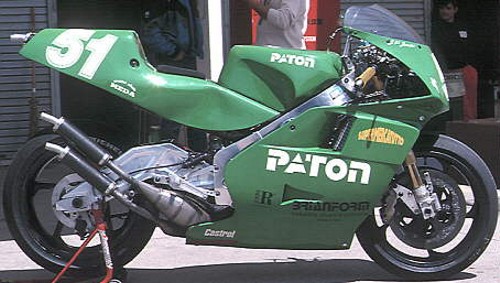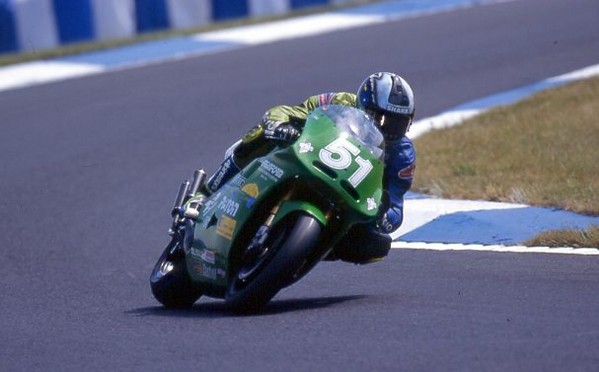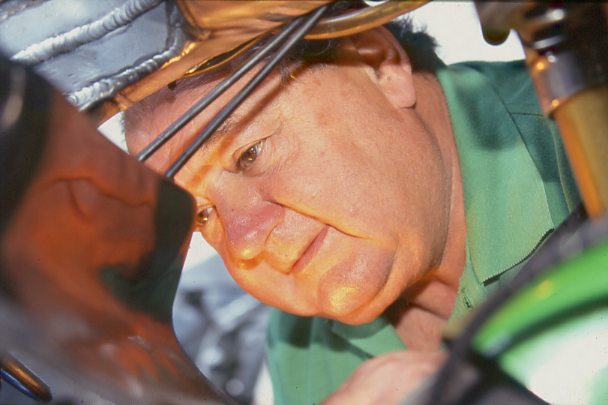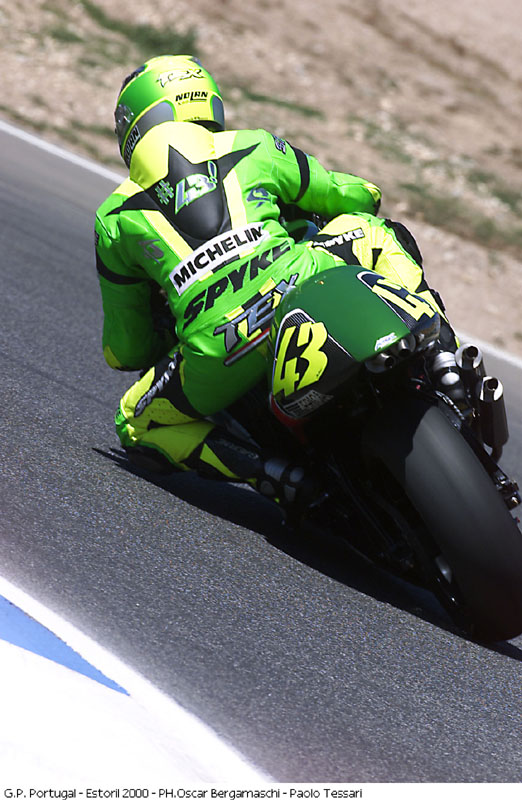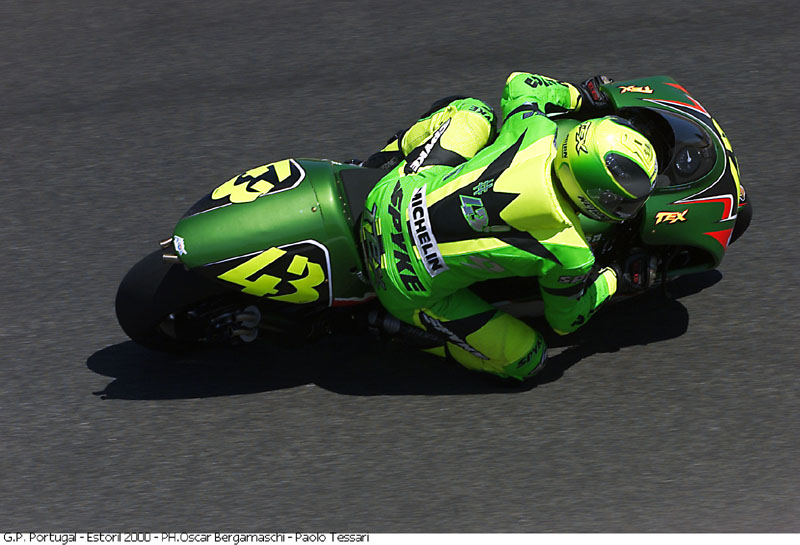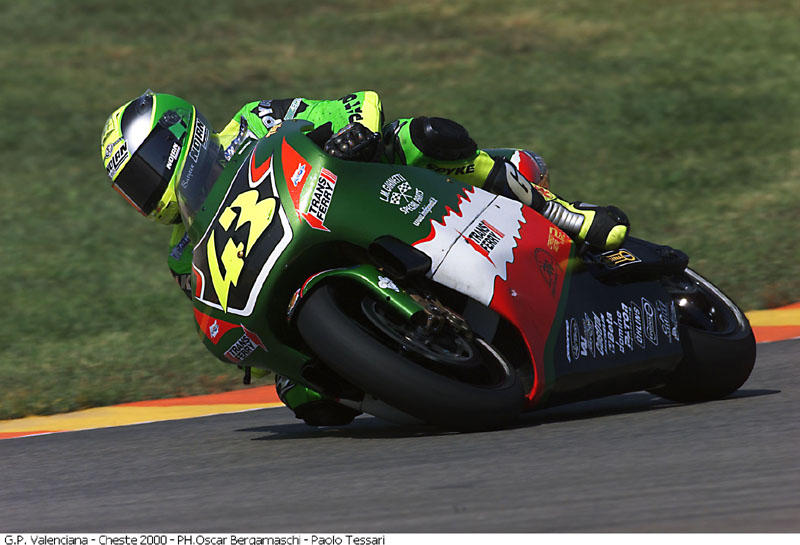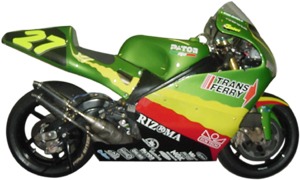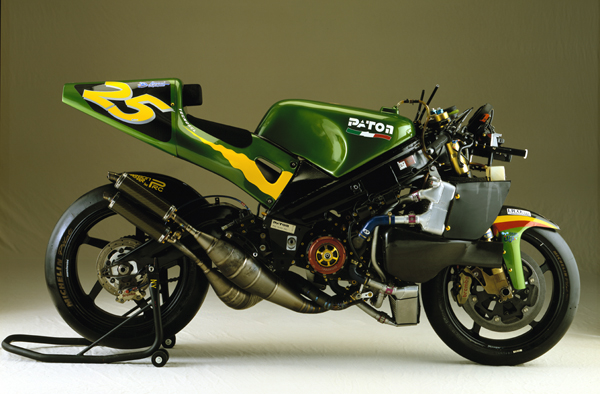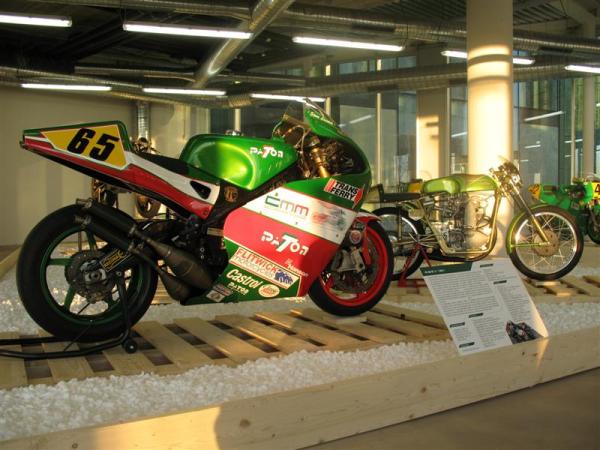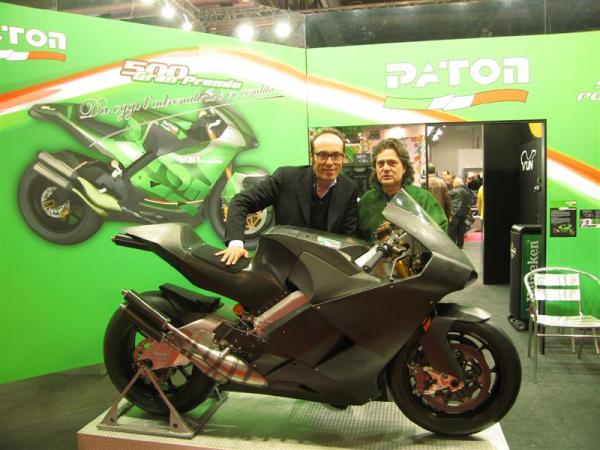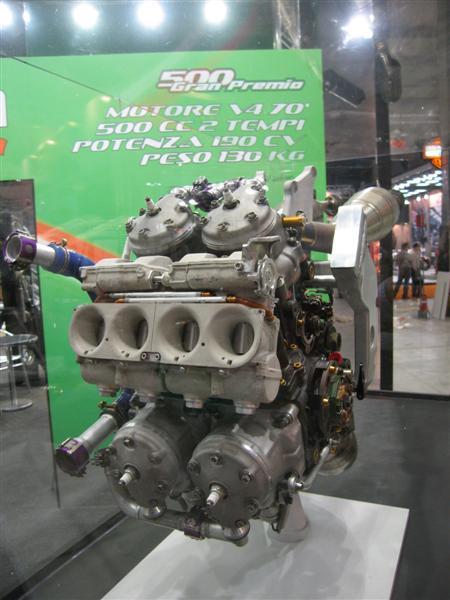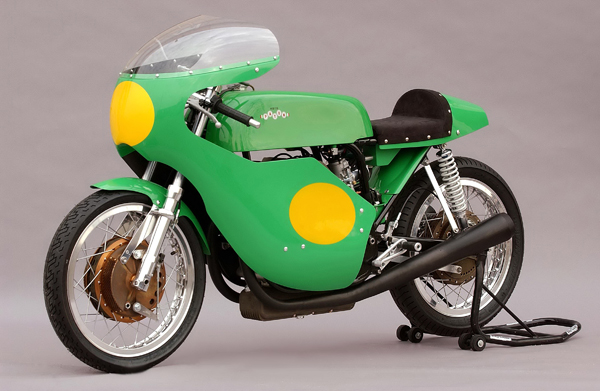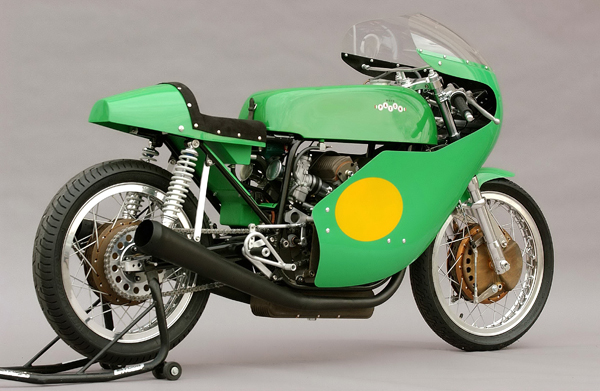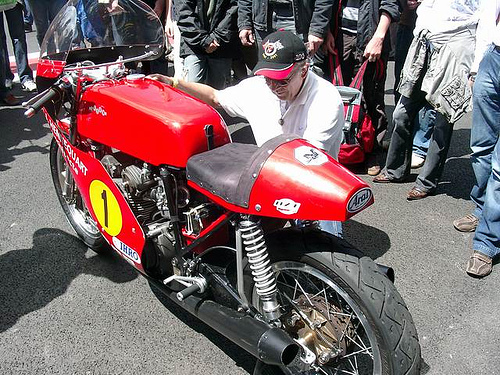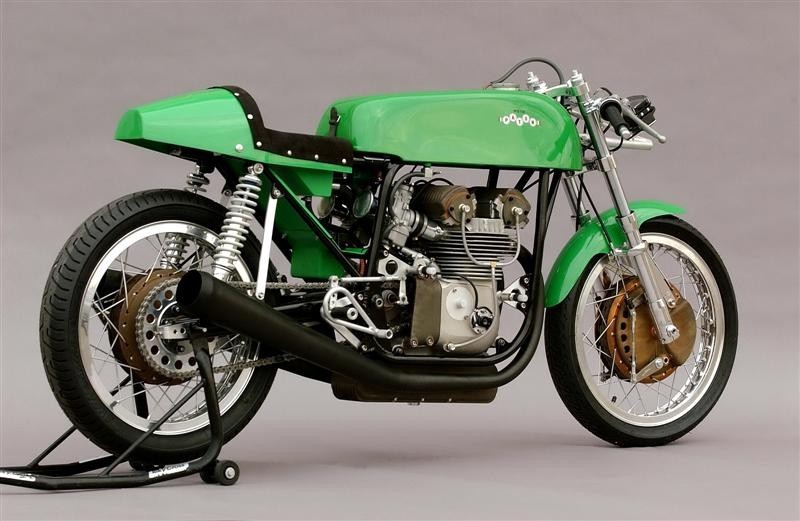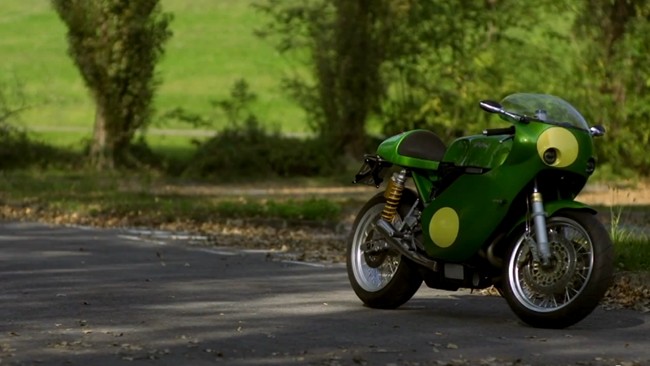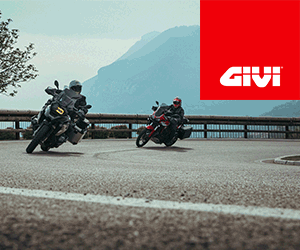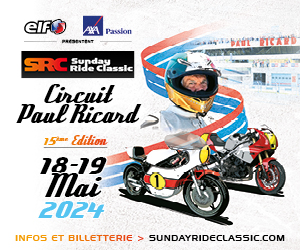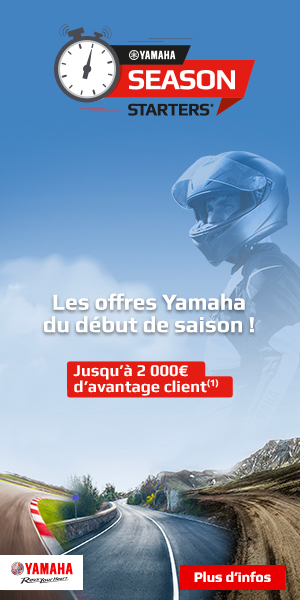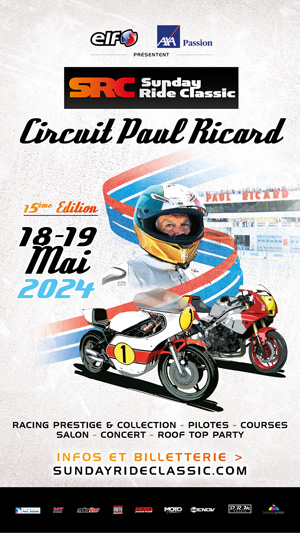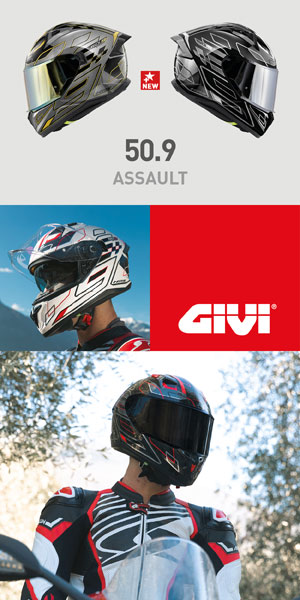Paton, who has just announced his desire to participate in the Moto2 World Championship in 2018, is probably not known to our younger readers. For the most curious among you, we offer you a history of this Italian brand concocted by our friend Jérôme Henry, from the origins to the most recent creations.

THE ORIGINS
To understand where it comes from Paton, you have to go back to FB Mondial (FB for Fratelli Boselli).
The Boselli brothers manufactured cycles and utility vehicles before the war.
The motorcycle division was created in 1948 and the brand hired engineer Oreste Drusiani to design the machines, which were initially only competition machines. Drusiani designs a 125cc twin-cam single cylinder that immediately crushes the competition.
FB Mondial entered the World Championships in 1949, this being the first edition, and Nello Pagani offered the 125 not only its first victory, but also the world title, ahead of two other FB Mondial driven by Renato Magi and Carlo Ubbiali.
The FB Mondial 125 won the first three places in the 125 World Championship also the following two years, the winning driver being different each time (Bruno Ruffo in 50 and Carlo Ubbiali in 51), which proves the superiority of the machine, more than its pilots.
From 1952, on the strength of its success in competition, FB Mondial launched into the production of series motorcycles, production which was entirely subcontracted to Michelini in Milan, the FB Mondial factory continuing to build only competition motorcycles, those of the official team, but also motorcycles intended for private riders.
Between 1952 and 1956, the FB Mondial 125s were beaten by the NSU and MV Agusta in Grands Prix, but they continued to accumulate national and international victories, as did the 175 which had been derived from them.
An ex-Benelli engineer, Lino Tonti, who also created a record-breaking 75cc under his Linto brand, with an AerMacchi engine, was recruited to design a 250 twin-cylinder twin-cam. But as its development will take longer than expected, it is on a twin-cam single cylinder that the official FB Mondial team attacks the 250 World Championship and will win the first three places in the 250 1957 world ranking, with Cecil Sandford winning the title ahead of his teammates Tarquinio Provini and Sammy Miller.
At the same time, the Tonti twin saw the light of day in 57, and it was tested by Sandford and Provini, but the factory concentrated on the mono which was fighting for the title and postponed the entry of the Tonti twin into competition until 1958.

Cecil Sandford on the Mondial 250 single factory in 1957
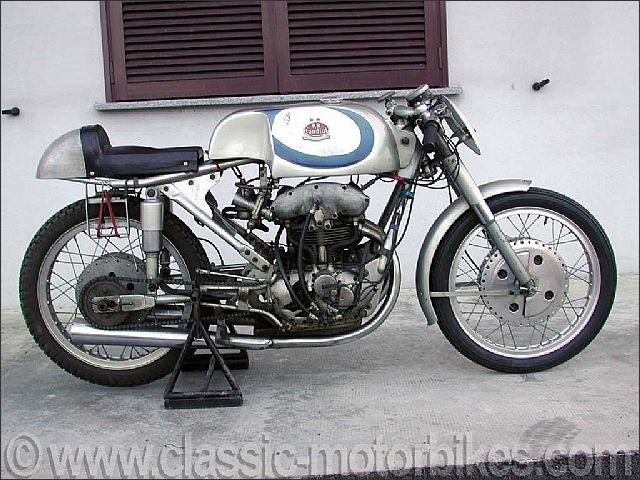
The FB Mondial 250 twin Bialbero prototype 1957
The same year, the new Mondial 125 won the world title again, with Tarquinio Provini.
Around the same time as Tonti, a talented mechanic was hired by FB Mondial, initially to take care of the 125 and 175 delivered to private pilots; but he will distinguish himself and become chief mechanic of the 250 factory team, that of Cecil Sandford's title; This is Giuseppe Pattoni, who in 1946 set up a workshop specializing in the transformation of former military motorcycles into civilian motorcycles.
At the end of 1957, all the Italian teams decided to withdraw from the grands prix, which would seal the death certificate of the Guzzi V8, among others.
MV Agusta will betray this agreement but that's another story. FBMondial follows this movement and announces its immediate withdrawal from competition, so that the 250 twin developed by Lino Tonti will remain a prototype.
THE CREATION OF PATON
Giuseppe Pattoni joins forces with Lino Tonti to create the brand together Paton (PAttoniTONti), and the Boselli brothers agreed to give them the official 125 and 175 parts which remained at the factory. In the 1957-1958 off-season, Pattoni used these parts, and others remade on the same model, to transform around ten FB Mondial 125 and 175 single shafts into Bialbero, under the Mondial name. Paton. One of Pep's famous clients will be Mike Hailwood, who will ride a Mondial Paton 125 in 1958, finishing 7th in the TT on the Isle of Man.

Mike Hailwood and his Mondial Paton 125 in 1958, with Pep himself in mechanic's blue.
The man who cleans Mike Hailwood's glasses is Bill Lacey, hired by Stan Hailwood to prepare the many and varied machines piloted by Mike.
At the same time, Tonti embarked on the development of a Paton 250 in the continuity of the Mondial twin prototype, which the two partners had the idea of then marketing to private drivers, to finance their Grand Prix team.
A Paton 250 twin will even make its appearance at the GP des Nations in Monza at the end of 1958, but it will not start.
But before having finished developing this machine, Lino Tonti left the ship to join Bianchi, an offer he could not refuse. He will create splendid twin-cylinders there, but that's another story.
Pattoni, who also works as a mechanic in a Citroën dealership owned by Italian driver Giorgio Pianta, is forced to put the team to sleep due to lack of funds. Paton in the World championship, but he continues in the Italian championship with his 125, which are sometimes called World, sometimes Paton, sometimes Global Paton in the rankings.
At the same time, he himself completed the development of a smaller 250 double-cam twin, whose engine was running on the bench in 1962 and which would be ready in 1964 and would immediately experience some success in the Italian classics in the hands of Gianpiero Zubani , Angelo Bergamonti or Alberto Pagani.
The latter even obtained a splendid 3rd place in the Lightweight category at the 1964 TT, which was at the time the biggest race in the World!
A 350 will be derived very quickly, and will obtain very good results too.
All of these Paton, Giuseppe “Peppino” Pattoni designed them, then ordered the parts from specialists everywhere, and when everything was delivered, he assembled the motorcycles in Giorgio Pianta's garage, during closing hours, with his faithful mechanic, the pilot Gianemilio Marchesani!
The executives of the first Paton were thus manufactured at Belletti.
The English driver Fred Stevens, undoubtedly impressed by Pagani's podium in 1964, had his sponsor, the car dealer Bill Hannah, purchase a 350 Paton.
Enchanted by the behavior of this bike and the results of its rider, Bill Hannah asked Pattoni to build a 500 on the same model as the 250 and 350.
Bill Hannah financed the design of this 500 and became the team's sponsor in 1967, allowing Pattoni to continue the development of its twins, and to retain talented drivers, mainly Fred Stevens and Angelo Bergamonti.
The engine of the first Paton 500, at the end of 1966, was a 464cc (we sometimes read that a very first 420cc version saw the light of day at the beginning of 66). Classic for the time not to exploit the authorized cylinder capacity to the full: there were also Honda 450s, AerMacchi 383s, Bultaco 360s, CZ 440s etc etc… And even in 350s, we found 250s rebored to 297cc (Honda RC174) or 305cc (Honda CR77).
It was called BIC500 BL1 (BIC for Bicilindrica and BL for Belletti)
From 1967, the BL2 version, as well as the 350 still in the game, enjoyed great success.
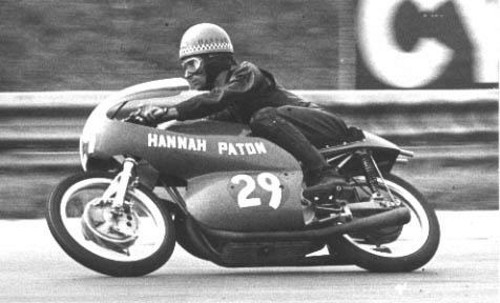
Angelo Bergamonti on the Paton 350 de 1967
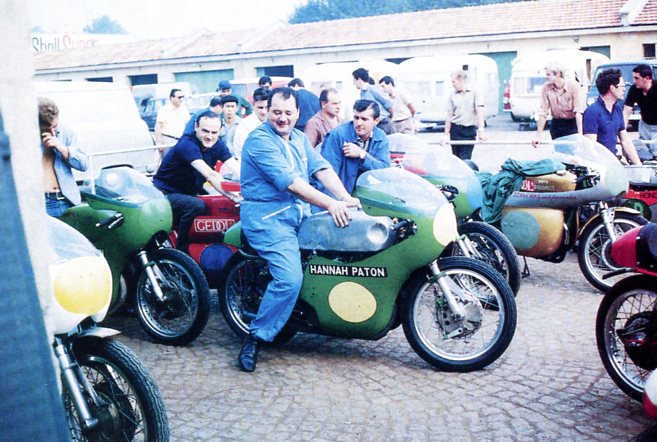
The Hannahs Paton 500 and 350 at Monza in 1967 (on the 500: Peppino Pattoni)
A third Paton is behind the 500, and wears green plates, but it seemed to me that the 250 was no longer racing in 1967, so it is either a 350 or a 500 which did not receive its number plates, or the 250 of Bergamonti seen in color above…
Angelo Bergamonti notably managed to win the title of Italian 500 champion in 1967 on his Paton BIC500 BL2, ahead of Giacomo Agostini and his MV Agusta, World Champions that year. The twin then developed 60 horsepower at 9.600 rpm.
As for Fred Stevens, he obtained a resounding double 350-500 on his Paton at the NorthWest 200!
Bill Hannah withdrew from the business at the end of 67, but Paton continued to enter motorcycles, notably in the Italian championship, with official riders Angelo Bergamonti and Billie Nelson.
Bergamonti will unfortunately leave Paton in 1970 to accept an offer from MV Agusta to help Giacomo Agostini. Bergamonti wanted at all costs to demonstrate that he had nothing to envy of Giacomo, and he killed himself in April 1971 in a pre-season race, in Riccione in Italy, while trying to catch up with Ago in torrential rain.
Pattoni will regularly evolve his twin, giving it a displacement of 498cc, 4 valves per cylinder, and dual ignition. (the 4-valve versions will be called BIC500 8V BL (Belletti frames until the BL7 of 1972).
The Frenchman André-Luc Appietto was one of the private pilots loyal to Paton : he first bought, for the 1969 season, the BL2 1967 used in 1968 by Antoine Paba, then directly purchased a new model from Paton then, for the 1970 season, and perhaps another for 1971, since thanks to Philwood we have the announcement of Appietto selling his Paton in October 70 (unless he kept the ex-Paba for a while).
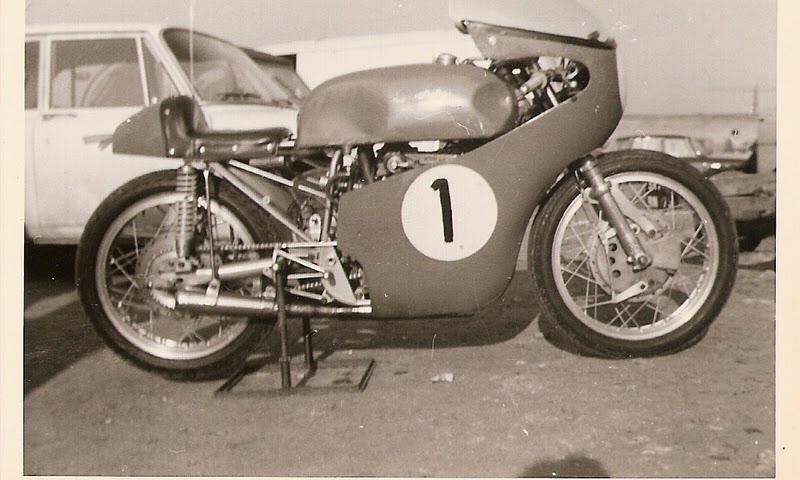
La Paton 500 by Antoine Paba in 1968
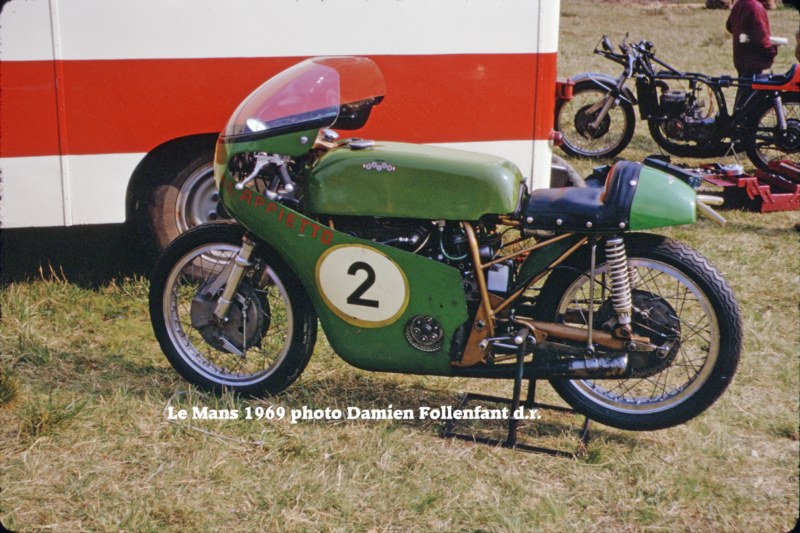
Appietto on his Paton 500 ex-Paba at Le Mans in 1969©Damien Follenfant
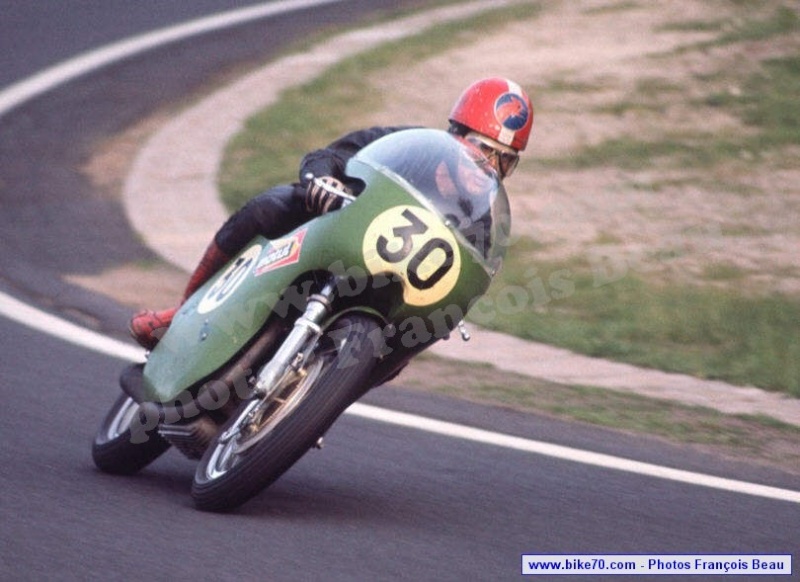
Appietto on his news Paton 500, at Charade in 1970©François Beau – Bike70

Motorcycle Magazine Ad October 1970
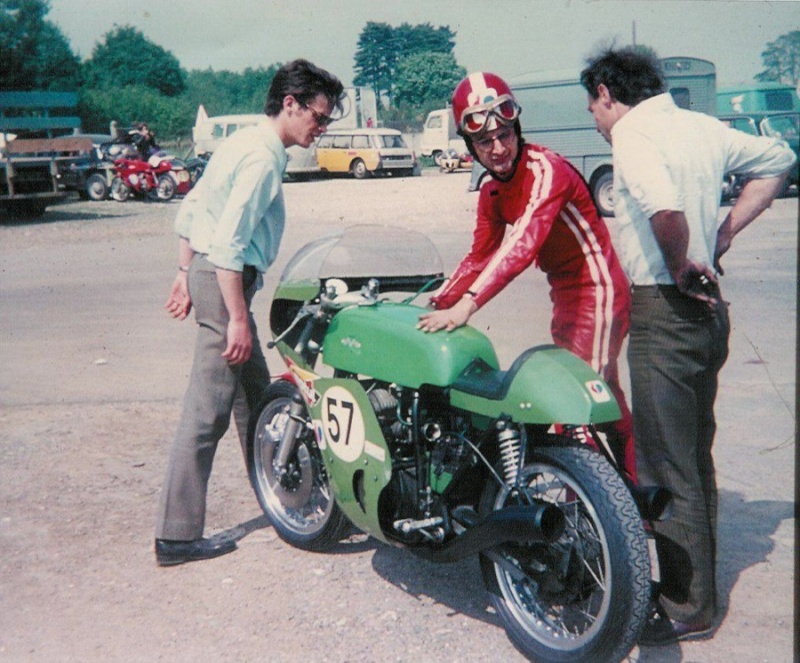
André-Luc Appietto and his Paton in 1971 in Monthléry
Unlike the Japanese factories, Pattoni resold its official motorcycles from the previous year to private riders, and manufactured customer-compliant examples on demand, and provided after-sales service on the circuits. Appietto recounts in particular that from his first race with the Paton ex-Paba, he broke the crankshaft, and Pattoni replaced it under warranty.
For private individuals Paton constituted a very competitive alternative to the large, less powerful English monos.
The Algerian government thus purchased two Paton 500 for the Algerian national team for the 1970 season, through André-Luc Appietto. (Thanks TheFrenchOwl for the anecdote)
Mustapha Ali Moulay thus took the start of the 1970 French GP on a Paton 500, but did not finish the race.
Note that the other member of the Algerian national team, Larbi Habbiche, finished 14th in the 250cc on a TD2, just ahead of a certain Gérard Rolland, on Ossa ![]()
Pattoni was finally able to have his own workshop in Milan, from 1972, in which he assembled the Paton of GP.
It was also at this time, in 1972, that Massimo Tamburini, an entrepreneur whose company BiMoTa created in 1966 with his associates Bianchi and Morri, manufactured heating and air conditioning equipment, was unhappy with the handling of his Honda CB750. personal, decides to create an entirely new framework for it, and he convinces his partners to launch their business in this diversification: Tamburini's motorcycle will be the Bimota Honda HB1.
Pattoni approached Tamburini and, from 1973, the Belletti frame was abandoned for the 500 Paton, for the benefit of a Bimota frame.
Pattoni also prepares Hondas for racing, in collaboration with the company IAP, created in 1971 as a joint venture between Honda and Italian investors, and which will operate the Val Di Sangro factory (in Abruzzo) where Hondas will be manufactured in subcontracting.
This is how, during the 200 miles of Imola in 1973, IAP entered four Honda 750s, two factory CRs in the hands of Morio Sumiya and Luigi Anelli, and two Paton-Honda, CB750s with parts from the RSC kit, for Roberto Gallina and Armando Toracca.
Note that, during these 200 miles, Luigi Anelli will hesitate between two machines, the factory Honda CR750 and the Bimota HB1
Pattoni also prepared the Paton Honda CB500 with which Virginio Ferrari will shine in the Italian championship in 1974, always with the backing of IAP Honda.
Official drivers Paton during this period 64-75 were mainly Gianpiero Zubani, Alberto Pagani, Angelo Bergamonti, Fred Stevens, Billie Nelson, Roberto Gallina, Francesco Trabalzini, Silvano Bertarelli, Luigi Anelli and finally Armando Toracca and Virginio Ferrari, during the last year of the twin in 1975 (and again, Toracca was hired by MV Agusta to replace the injured Bonera).
This very last grand prix BIC500 8V from the years 73-75 was a showcase of Italian competition craftsmanship of the time: Bimota frame, Borrani wheels, Fontana brakes, Ceriani fork, Dell'Orto carburetor... But this marvel was outdated and Pattoni would have to give up or switch to two-strokes.
MV Agusta, faced with the same alternative, decided to throw in the towel, but Giuseppe Pattoni decided to take the plunge.
THE SWITCH TO TWO-STROKE ENGINES
1. The V90 engine (1976 – 1985)
The first Paton 2-stroke was presented in 1976, and with a 4cc 90° V492 with single crankshaft. I had in mind that this engine had been made by coupling two AerMacchi-HD 250 engines, but I did not find confirmation anywhere on the Internet... It seemed to me that I was burned by the failure of its 500 twin to 4 carbs, the HD AerMacchi factory had considered this V4 for the 76 season, but had given up on it, concentrating on the 250 and 350 twin, which would also win both titles that year with Walter Villa.
After hesitation, I'm telling you anyway, while waiting for it to be formally confirmed or denied.
In any case, the cylinders and a large number of engine parts, as well as the gearbox, were indeed from AerMacchi-HD. We often read that Pattoni was a precursor of genius for having built a V4 with a single crankshaft, a solution that Honda would adopt many years later, but in reality this V4 engine is an in-line 4-cylinder (hence the single crankshaft) with the outer cylinders were placed at 90° to the inner cylinders, and turned over. The presence of a single engine is therefore undoubtedly not the product of a brilliant idea, but quite simply of the very constitution of this engine.
This engine was given for 90 horsepower, or 25% more than the 8v twin of the previous year…
For comparison, the Suzuki RG500 from 1976, in factory XR14 version, world champion that year, was given for 115 horsepower.
The frame was a Bimota which would prove to be the weak point of the bike, perhaps the only failure of Massimo Tamburini's career.
Virginio Ferrari had ridden in the Italian championship on a Honda CB500-4 frame Paton in 1974, then in Inter on the latest version of the Paton 500 8v in 1975, with excellent results, and Pattoni was counting on him to debut the V4, but the young Italian accepted an offer from Roberto Gallina to ride a semi-official Suzuki.
It was therefore the Tuscan Pieraldo Cipriani, until then rather accustomed to small cars and hillclimbs, who was entrusted with the task of roughing up the new Paton, who will compete in a single race at the end of the season.
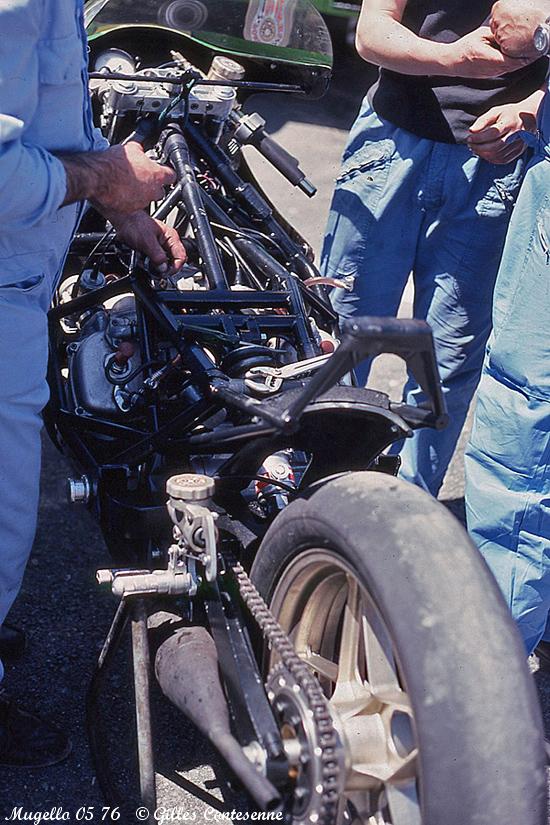
Thanks to Gilles Contesenne and Christian Bouchet, a photo of the Paton V90 BM4 at the 1976 GP of Nations (Mugello)
Very quickly, the Bimota frame was replaced by a Segoni, and the Paton remained more or less as is until 1983, making only very episodic racing appearances.
It is true that the period is rich in new 500s in Italy, from Lombardini to Cagiva via Sanvenero, Morbidelli and other Librenti, and it is not easy for Peppino to find sponsors.
In 1984, Paton presents the V90 C2, still with the 4° V90 engine, but in a new frame manufactured at Colombo.
Eric Saul will be entered in the 1984 French GP on the Paton, but he will not succeed in qualifying it.
2. The V115 engine (1986 – 1992)
Its engine turned out to be definitively outdated and Pattoni designed a brand new engine, 4 cylinders in V at 115° of 492cc, which would appear for the first time at the end of 1985 at Mugello, in a tube frame:
La Paton V115 C5/1, rated for 140 horsepower and 139 kilos, will be ready for the 1986 season, with an aluminum frame this time, still from Colombo.
She only took part in the two GPs taking place in Italy that year, in the hands of Vittorio Scatola, retiring in both cases.
In 1987, four GPs on the Scuderia program Paton, with Vittorio Scatola (DNF at Misano and Rijeka, 16th at Le Mans) and above all the entry of two motorcycles at the GP des Nations, where Marco Papa will finish 16th and Vittorio Scatola 21st. There Paton V115 C5/2 now develops 145 horsepower and it has lost 10 kilos.
In 1988, only two GPs, a retirement at Jarama for Fabio Biliotti and one for Scatola at Imola, plus a fairly logical non-qualification at Donington for Rene Zanatta, an Argentinian driver without any great track record.
In 1989 the arrival of a sponsor and an arrangement with Team Greco made it possible to envisage an almost complete season for Marco Papa (all European GPs), the Paton V115 C7/2 showing itself at the level of the good private Honda RS and Suzuki RG in terms of performance, but much less reliable, probably due to lack of resources. Retirements at Jerez, Misano, Le Mans and Brno and finishes between 16th (Donington) and 20th place (Assen).
Paton and Team Greco separate and it is with Team Elit that Pattoni finds an arrangement for 1990, the faithful Vittorio Scatola taking over the handlebars, for a program of 7 GPs in Europe, which will result in 5 retirements (Jerez, Rijeka, Assen, Spa, Le Mans) but also a 16th place at the Nürburgring and above all a 15th place during the GP des Nations in Misano, synonymous with a point in the championship (although the Paton finished last at 8 laps).
A new reduced program in 1991 for the Paton V115 C8/3, with Michele Valdo as driver, who finished 16th (and last) after 6 laps at the French GP and retired at the English and San Marino GPs (or San Marino, but not "San Marino" as it is known). read in the French press).

Michele Valdo 1991
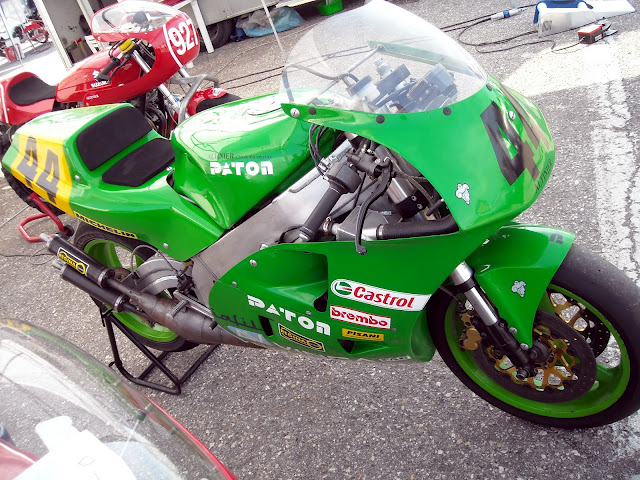
La Paton V115 C8/3 driven by Michele Valdo at the 1991 British GP, seen in 2010 at Magione
Two detailed views of the V115 C8/3 from 1991:
Lucio Pedercini is entered for 1992 on the V115 C8/4, for an almost complete season thanks to the sponsors he brings and the logistical support of the Pedercini team founded by his father, but the strong arrival of the ROC and Harris engines Yamaha makes life difficult for Italian craftsmen's motorcycles Paton, VRP and Librenti.
Pedercini retired at the GPs of Japan, Malaysia, Spain, Italy, Hungary, England and Brazil, and only finished 23rd at the European GP, 22nd at the German GP, 20th at the Dutch TT in Assen.
Lucio Pedercini at Suzuka on the V115 C8/4 (photos Manfred Mothes)
3. The V70 engine (1993 – 2001)
In 1993, Pattoni presented a new motorcycle, the V70 C9/1, equipped with a completely new engine, a 4cc 70° V498.
History has it that Honda helped Paton
for the design and production of this new engine.
Pattoni obtains a wild card to participate in the 1993 Imola GP with Vittorio Scatola, but the bike will not be ready in time.
It returned in the C9/2 version in 1994, still with Vittorio Scatola as official driver, but remained at the back of the grid during its rare appearances.
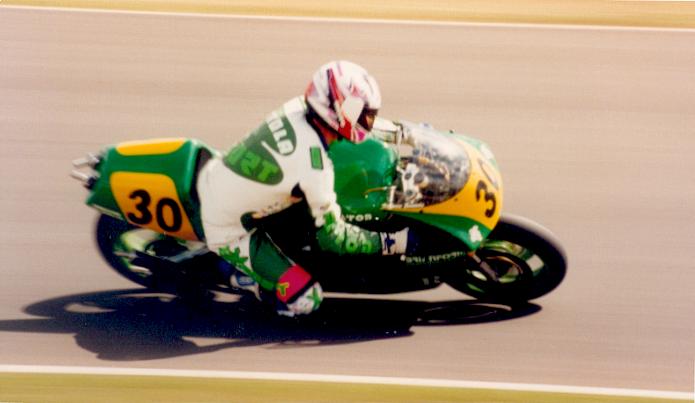
Vittorio Scatola at the 1994 Australian GP (photo Philippe7)
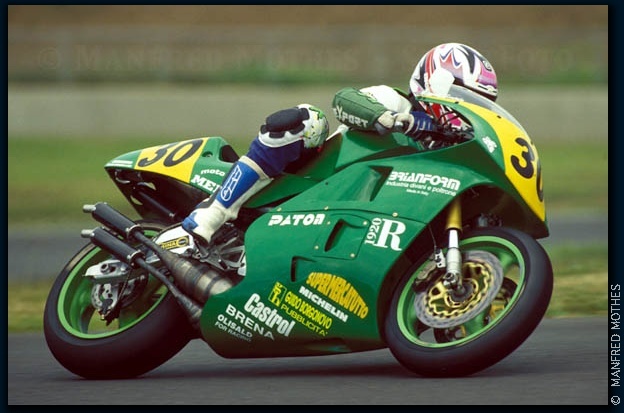
Vittorio Scatola at the 1994 Australian GP
For the 1995 season, an agreement was reached between Peppino Pattoni and the driver França
is Jean-Pierre Jeandat, and the team will be called “Team JPJ
Paton"
Jeandat will be highlighted in 1995, marking a point on the V70 C10/1 evolution.
José Kuhn will freelance at the Czech Republic GP to replace the injured “Bouap-Bouap”, but will be the victim of a fall in the first lap.
En 1996, the Paton (C10/2) will participate in almost the entire season, with Jean-Pierre Jeandat as main driver, still within Team JPJ Paton.
Florian Ferracci will replace him for the German GP, and a second bike will be entered at the Imola GP, Jeandat finishing 17th in the same lap as the winner, and Marco Papa 18th and last two laps away.
With Jeandat injured again, Toshiyuki Arakaki will take over for the last two GPs of the season, and even score a point at the Australian GP, undoubtedly the only Japanese rider to score points in the 500 on an Italian bike!
Unfortunately for Pep and his son, the GP organizers decided, in view of the 1997 season, that the small team Paton no longer meets the desired standards of professionalism, and the team's request to register for the entire GP season is rejected.
As in the 80s, the courageous team Paton is limited to a few episodic participations, generally during GPs taking place in Italy.
In 1997, Paton will have two wild cards, for Francesco Monaco (DNF, 19th).

Francesco Monaco
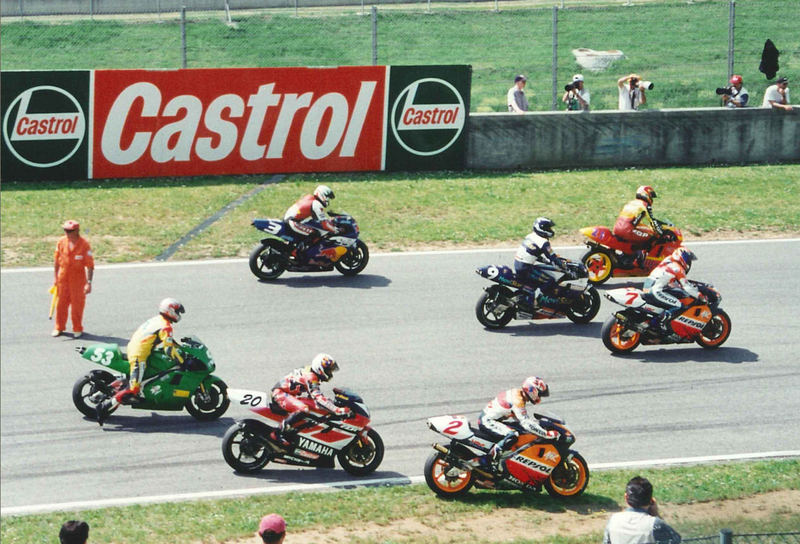
Francesco Monaco makes the fuel stop: look at his opponents, it's no laughing matter!
and the same in 1998 with GianMaria Liverani (Italian GP, DNF) and Paolo Tessari (Imola GP, DNF).
In 1999, Paolo Tessari was entered in the Italian GP for the sole participation of the Paton in GP; he qualified (last) but fell in the first round of the race.
This will be the last GP contested by Paton during the lifetime of “Pep”: On August 29, 1999, Giuseppe Pattoni died; he was 73 years old.
Roberto, already at his side for a long time, took up the torch and started work on a new motorcycle for the 2000 season, the PG500 R: the engine is still the 4° V70, but the frame is designed and manufactured by LM Gianetti, a small competition parts store founded by GianCarlo Gianetti.
It only appears at the Italian GP, where Tessari retires; for his second GP, in Germany, Paolo Tessari arrived last by one lap... but he scored a point since there were only 15 competitors at the finish! Tessari will still be 17th in the Czech Republic, but he will retire in Portugal and Valencia.
For 2001, the Gianetti frame is put aside and it is the Cagiva V594 frame which accommodates the V70 engine.
She appeared for the first time at the British GP in the hands of Sébastien Gimbert (DNS), then at the tests for the Spanish and Italian GPs with the Slovakian Vladimir Catska, who did not qualify, and we would not see her again until 'in Brno, in the hands of the Australian Shaun Geronimi, but the last participation of a Paton in GP500 will result in a last place on the grid, 7″5 from pole, and a retirement from the race.
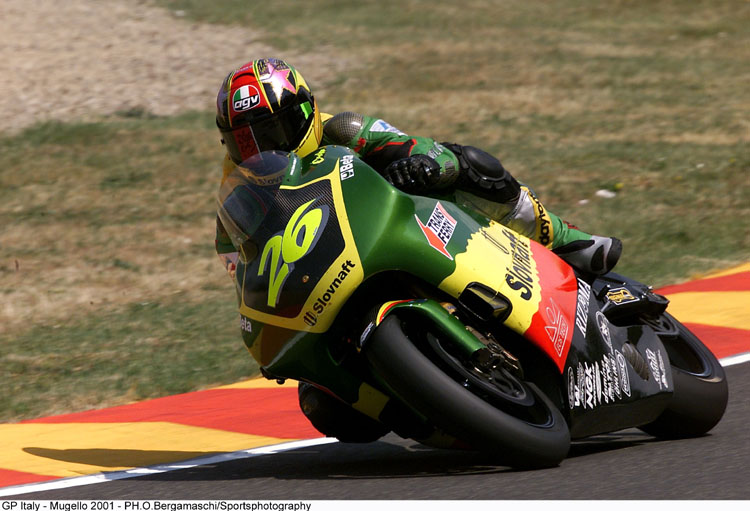
Vladimir Catska on the Paton PG500RC
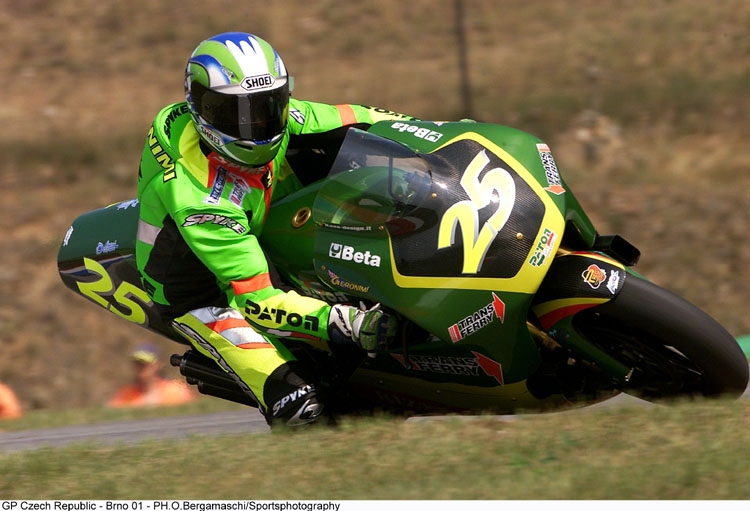
Shaun Geronimi on the Paton PG500 RC, last GP of Paton, 43 years after the creation of the brand
The advent of MotoGP unfortunately sounds the death knell for the team Paton, after 35 years of participation in GPs in the premier category. As much as Peppino was able to find the resources to move from 4-stroke to 2-stroke in 1975-76, the means necessary to compete in MotoGP are completely inaccessible for the small Italian team.
La Paton PG500 RC from 2001, fresh from the mothballs and equipped with specific preparation to face the Mountain Course of the Isle of Man, participated in 2007 in the fabulous Centenary Senior TT, in the hands of veteran Steve Linsdell, a customer of Paton running in historic races on one of the Paton BIC500 8v UK. The participation of a 2-stroke GP500 in the TT made a lot of noise at the time, but once again the reliability was not there and the beauty broke on the 4th of the six laps of the race, without ever having left the depths of the rankings.
Paton once offered on its site a 4-speed V2 equipped with the latest version of the V70 engine, for wealthy enthusiasts wanting to treat themselves to the thrill of driving a 500 with nearly 200 horsepower... Apparently, it was about a new frame, and the fairing has been brought up to date too.
The engine of this 500-2tps replica
Paton Engineering has a small design office activity, notably for their friends at CR&S, on the other side of the wall.
In 2008, a tribute was paid to Paton
for the 50th anniversary of the brand, as part of the Milan show, and the partner and neighbor of Paton, CR&S, has produced for the occasion a special version of its Vun, color Paton and equipped with yellow number plates, the traditional color of 500 plates.
Thanks to Fabien, you can admire this CR&S Vun here – Paton of the fiftieth anniversary, with Crepaldi, the boss of CR&S, and Roberto Pattoni
Paton also very early on rode the popularity of old racing motorcycles, by marketing a replica of the twin 500 8v from 1968, called BIC500 8v RU (for “Riedizione Ufficiale”)
It sold very well because it is approved for historic races, being a motorcycle built identically (or almost) by the same manufacturer.
Phil Read has one, number 008, strangely painted red!!!
Paton today markets two models of its replica:
– the 1968 version, now called BL3 R (Belletti 3 Replica)
– a so-called 1973 version, called BM3 R (Bimota 3 Replica)
It is limited because the Paton 500 of 1973 was the BM1, the BM3 being the 1975 version.
Moreover, while in 75 at the end of its development the
Paton 500 claimed 68 horsepower, the BM3R currently on the market claims 75,6 horsepower, or about 10% more. With its electronic ignition and disc brakes, this motorcycle is obviously much more efficient than its model...
Each motorcycle is built to order and numbered, with a certificate of authenticity.
Allow six months for delivery.
The price is not communicated…
In 2013, Paton has for the first time in its history announced its ambition to launch a road machine.
Built around a Kawasaki ER6 engine, the Paton S1 is announced for 2014, and its deliciously retro lines, its reduced weight and its quality equipment could well earn it great success, if the price is not too crazy.
Official site Paton : http://www.boss.it/index.htm
Many thanks to Manfred Mothes, who allowed me to reproduce here some of the thousands of photos from his site www.highsider.com
And of course thank you to the Pit-Laners who contributed greatly to this article, first by making me want to write it, then by encouraging me to develop it, and of course by providing their own memories, documents or research. 
Jerome HenryPhoto credits: DR










